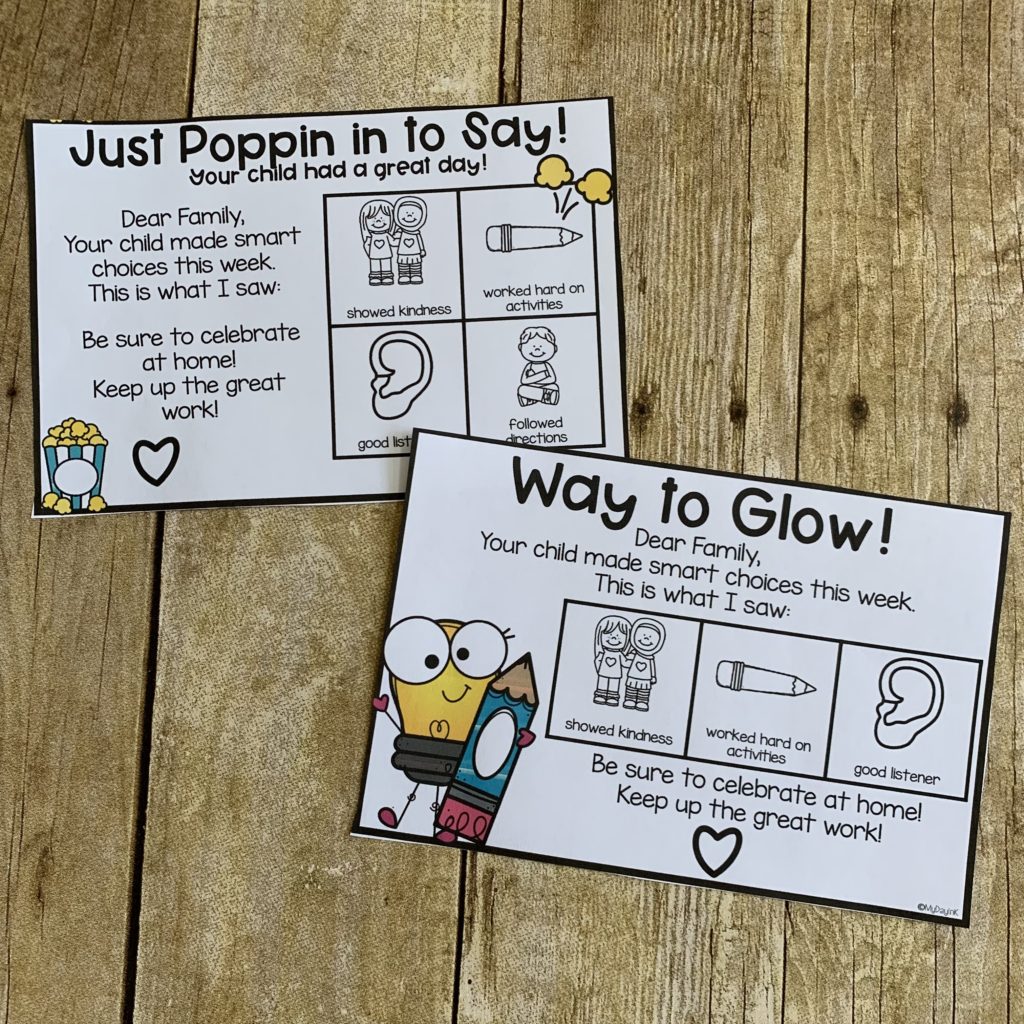Two Things All Parent Conferences Need

Parent conferences can be nerve-wracking. It’s intimidating to sit down with a parent and go over how a child is doing in your class. I think all teachers feel a little bit of insecurity at the thought of sitting face-to-face with another adult to talk about a child, because it feels like a reflection on our teaching. Today, I have two things that every parent conference needs in order to go smoothly and successfully. No matter what other elements you work into it, make sure you have these two pieces!
Things to Glow On
Always, and I mean always, begin parent conferences by sharing where a student does well. Leading with a student’s strengths illustrates two things: you are on the parent’s team, and you see the child for the unique and special individual that he or she is.
Make a list of 3 to 5 strengths that the child has, whether that is academic or just personality traits that make the student an important part of your classroom community. Lead with this list. It sets the tone for friendly, positive communication. You won’t regret it!

Things to Grow On
After you have shared what the student is doing well with, I recommend sharing some areas to improve. This is the most important part of sharing things to grow on: make sure they are data supported talking points. If you say that a child is struggling in a particular area, have more than one data point to back you up. The purpose of sharing areas for a student to grow on is to help them, not make the parent feel like the child is failing. The child is not failing. That’s the purpose of a conference: to talk about how a child is doing before the year ends. There’s no such thing as failure at the midway point.
I recommend limiting the things to grow on to only one or two. Even if a child has a myriad of things that could improve upon, there’s no point in overwhelming a parent with multiple things to focus on at home. Pick things that are easy to work on such as decoding skills, handwriting and pencil grip, or speaking and listening skills.
Send Notes Home
After sharing your things to glow on and things to grow on with parents, you can extend your rapport by sending home ‘Way to Glow’ notes! These notes can be sent home to reinforce the positive traits you have already shared with a family. Or, they can be used to share how a student is progressing in an area of weakness. However you choose to use these notes, they will build a positive communication relationship between you and your students’ families. Grab the notes HERE. And, for more ideas on how to build a home-school connection, check out this POST. Happy teaching everyone!

